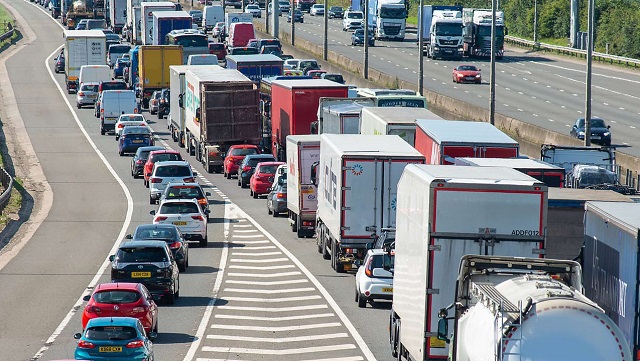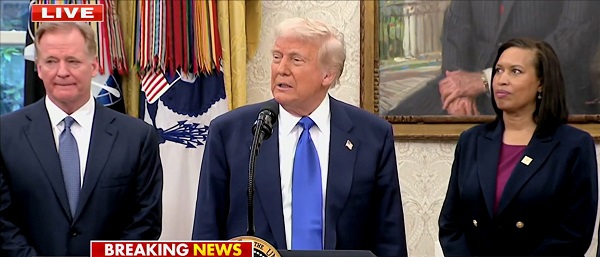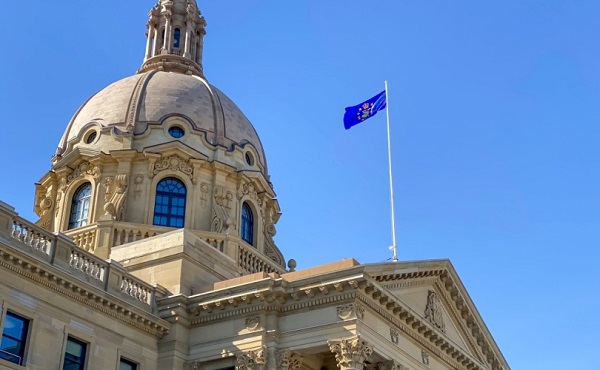Energy
444,000 semi-loads of food? Just another day on planet Earth

From the Frontier Centre for Public Policy
By Terry Etam
At 100 million b/d, the world consumes a billion barrels of oil every ten days. Eleven billion barrels of recoverable reserves will meet the world’s needs for about 110 days, or just under four months. And global demand continues to grow.
The scope of this discussion goes far beyond oil demand. It is imperative that people understand energy demand, and particularly so on a global scale.
A friend of mine, always with a keen eye on interesting things, passed on an interesting quote from the CERA Week energy conference the other week. The head of the International Energy Forum mentioned a surprising statistic, as quoted by Javier Blas on Twitter: “Heathrow airport in London uses more energy than the whole African nation of Sierra Leone [population ~8.5 million].” Yikes!
Here’s another one that turned up randomly in the feed by a credible source: “If we keep growing our energy usage (2.9% CAGR last 350 years) we will use more energy in the next 25 years than in all prior human history. 3x in 39 years and 9x by the end of the century.”
Energy is an amazing topic, both sources and uses. The sheer scale of what we require for our present lifestyle is mind-blowing when placed in concrete contexts like above. In the abstract, the numbers don’t mean anything. The world consumes over 100 million barrels of oil per day. So what? Is that a lot? Sure it’s a big number but so is 8 billion people. Either stat is hard to wrap one’s head around.
Consider the following with respect to oil consumption/production: ExxonMobil made waves recently for a large oil discovery offshore Guyana, in an era when there aren’t that many discoveries being made (the flip side of the demand for oil/gas companies to return money to shareholders means exploration generally takes a back seat). Reuters picked up the story: ExxonMobil announced a new discovery, one of 30 since 2015, in a 6.6 million acre area that to date has been found to hold 11 billion barrels of recoverable oil, which also equals the country’s total. The results are significant, moving Guyana up to 17th on the world’s petroleum reserve rankings, similar to Norway, Brazil, or Algeria.
Now compare that number to consumption. At 100 million b/d, the world consumes a billion barrels of oil every ten days. Eleven billion barrels of recoverable reserves will meet the world’s needs for about 110 days, or just under four months. And global demand continues to grow.
The scope of this discussion goes far beyond oil demand. It is imperative that people understand energy demand, and particularly so on a global scale.
Look at this history of global energy consumption chart from Our World in Data:

It’s nuts. But it coincides very well with the rising standard of living attained by humanity, particularly in the west, an increase the rest of the world wants to emulate.
Consider the following statistics if you think that trajectory is going to slow down or reverse any time soon.
Africa has about 1.2 billion people, or roughly 15 percent of the earth’s population. Yet Africa accounts for 2 percent of global air traffic. By contrast, Europe has a population of about 740 million, and accounts for 31 percent of global air traffic.
What if Africans decide they want to live like Europeans, air-travel-wise, which is not just justified on moral grounds but actually more functionally logical, because Europe covers only 1/3 of Africa’s size of 30 million square kilometres?
What if the rest of the world wants to enjoy air conditioning to the extent the US does (and why on earth wouldn’t they)? According to the US Energy Information Agency, nearly 90 percent of US households use air conditioning, and virtually every office building does as well. The US has about 130 million households for 330 million people, or about 2.5 people per household. If Africa had a similar ratio, they would have 480,000,000 households, and if a similar proportion had AC there would be 430,000,000 households with AC. It’s safe to say that today in Africa the number of households with AC is far closer to zero than 90 percent. (Even communists/hardcore socialists support near-universal air conditioning, though they call it a ‘right’ by way of that fuzzy but firm ‘gimme that’ appropriation way of theirs.)
Now add in India, with another 1.4 billion people, and do the same math. A billion air conditioners worth of global demand is not a ridiculous estimate, not when considering Pakistan, Bangladesh, Indonesia, parts of South America… in addition to Africa, India…
Consider even food, and the logistical magnum opus required to keep countries food-riot-free. A typical western website says that the average person consumes 3-4 pounds of food per day. Let’s say the rest of the world isn’t so lucky, and we’ll call it 2.5 pounds per day for a global average (each new cruise ship drags the world average up considerably). There are 8 billion of us schlepping around planet earth. A semi trailer can carry about 45,000 pounds of cargo. So every day, the equivalent of about 444,000 semis full of food are forklifted out of trucks and down the gullets of 8 billion upturned mouths. Every freaking day, without a break.
And that’s just food. What about IKEA. And Costco. And Home Depot. And Walmart. And all the other stuff in our world.
And billions more people are striving to fill up the SUV (yes, everywhere you go, SUV) at their local Costco/Home Depot/Walmart, as soon as one arrives in their community.
Ah hell, I give up. The scale of all this stuff is unfathomable. And yet it all gets where it needs to go, every day, as long as there’s energy.
Any singular household staple must be there, in abundance, or all hell breaks loose. Remember Covid > toilet paper? What happens as soon as there is even a rumour of a shortage? Social deviants, which are harder to eradicate than (and just as useful as) STDs, get into gear and begin hoarding in order to resell at a profit. It just happens, one of the unfortunate costs of living in a free society. (I’m not suggesting that those people should be found and beaten with a tire iron, but then again I’m not suggesting that they shouldn’t.)
When we think of energy consumption, we tend to think of our hilariously comfortable lives in western nations, where supermarkets are perpetually full, where gasoline and heating fuels are available 24/7/365 at reasonable prices, where flying wherever and whenever we want, with minimal hassle, is one step away from being viewed as a human right. We are correct in that our energy consumption per capita in the west is very high. But on an outright total consumption basis, individual country statistics are pretty wild. And saddening, in some ways.
First the wild part: You would expect (or I did anyway) the US to be either at the top of the consumption pile or close; it is and has been an economic juggernaut for a century. But not even close: in 2022, the US consumed about 96 exajoules of energy, which is a lot – that number equals the consumption of India, Russia, Japan and Canada combined. But way out in front is China, with 2022 consumption of 159 exajoules. No one should be surprised China leads the world in renewables installation and coal fired power plant construction. They need it all.
Where it gets sad is to wander further down the list to the lowest consumers. The site linked above shows a graphic of the world, with each country colour-coded for total energy consumption. The lowest on the colour scale is a pale yellow representing 20 exajoules per year. The scale rises up through blues and towards a dark navy which represents China at the top of the heap.
Most African countries, and some South American ones, do not even warrant a definition in the legend at all, and are simply greyed out. They have so little energy consumption they hardly even make it onto the raw data table. Hundreds of millions of people live like that. But only as long as they have to.
It is very sobering to see how much of the world lives, and how very far they are from the West’s standard of living. The West’s leaders push the concept of ‘electrify everything’, a concept that only makes sense if one is looking no further than their backyard and has zero feel for the true global situation. In much of the world, they would just as happily get behind the slogan ‘electrify anything’.
It is hard to imagine this energy consumption trajectory falling; we’d be very lucky if it stayed flat. But that seems like an unrealistic hope. The developing world clearly has every incentive and right to advance towards the West’s standard of living, and if they get close global energy consumption will head off further into the stratosphere. Here in the West, we play cute little games like a forced switch to EVs, while ignoring almost totally any common sense commentary on the subject (For example, Toyota’s 1:6:90 rule which states that for the same amount of raw materials to manufacture one EV, Toyota can make six plug-in hybrids or 90 hybrids, and in doing so would achieve 37 times the emissions reduction of a single EV. Yet Toyota is scorned for such logic on the grounds that “Toyota’s reluctance to fully embrace EVs can hinder innovation in the EV industry.” Note that there is no challenge to the facts themselves, just a bruising of the ego of the think tanks.)
Anyone that provides energy of any kind should roll up their sleeves, there’s a lot of work to be done, and those who wish to hunt for energy villains will get run over, in due course.
Terry Etam is a columnist with the BOE Report, a leading energy industry newsletter based in Calgary. He is the author of The End of Fossil Fuel Insanity. You can watch his Policy on the Frontier session from May 5, 2022 here.
Automotive
Federal government should swiftly axe foolish EV mandate

From the Fraser Institute
Two recent events exemplify the fundamental irrationality that is Canada’s electric vehicle (EV) policy.
First, the Carney government re-committed to Justin Trudeau’s EV transition mandate that by 2035 all (that’s 100 per cent) of new car sales in Canada consist of “zero emission vehicles” including battery EVs, plug-in hybrid EVs and fuel-cell powered vehicles (which are virtually non-existent in today’s market). This policy has been a foolish idea since inception. The mass of car-buyers in Canada showed little desire to buy them in 2022, when the government announced the plan, and they still don’t want them.
Second, President Trump’s “Big Beautiful” budget bill has slashed taxpayer subsidies for buying new and used EVs, ended federal support for EV charging stations, and limited the ability of states to use fuel standards to force EVs onto the sales lot. Of course, Canada should not craft policy to simply match U.S. policy, but in light of policy changes south of the border Canadian policymakers would be wise to give their own EV policies a rethink.
And in this case, a rethink—that is, scrapping Ottawa’s mandate—would only benefit most Canadians. Indeed, most Canadians disapprove of the mandate; most do not want to buy EVs; most can’t afford to buy EVs (which are more expensive than traditional internal combustion vehicles and more expensive to insure and repair); and if they do manage to swing the cost of an EV, most will likely find it difficult to find public charging stations.
Also, consider this. Globally, the mining sector likely lacks the ability to keep up with the supply of metals needed to produce EVs and satisfy government mandates like we have in Canada, potentially further driving up production costs and ultimately sticker prices.
Finally, if you’re worried about losing the climate and environmental benefits of an EV transition, you should, well, not worry that much. The benefits of vehicle electrification for climate/environmental risk reduction have been oversold. In some circumstances EVs can help reduce GHG emissions—in others, they can make them worse. It depends on the fuel used to generate electricity used to charge them. And EVs have environmental negatives of their own—their fancy tires cause a lot of fine particulate pollution, one of the more harmful types of air pollution that can affect our health. And when they burst into flames (which they do with disturbing regularity) they spew toxic metals and plastics into the air with abandon.
So, to sum up in point form. Prime Minister Carney’s government has re-upped its commitment to the Trudeau-era 2035 EV mandate even while Canadians have shown for years that most don’t want to buy them. EVs don’t provide meaningful environmental benefits. They represent the worst of public policy (picking winning or losing technologies in mass markets). They are unjust (tax-robbing people who can’t afford them to subsidize those who can). And taxpayer-funded “investments” in EVs and EV-battery technology will likely be wasted in light of the diminishing U.S. market for Canadian EV tech.
If ever there was a policy so justifiably axed on its failed merits, it’s Ottawa’s EV mandate. Hopefully, the pragmatists we’ve heard much about since Carney’s election victory will acknowledge EV reality.
Daily Caller
Trump Issues Order To End Green Energy Gravy Train, Cites National Security


From the Daily Caller News Foundation
By Audrey Streb
President Donald Trump issued an executive order calling for the end of green energy subsidies by strengthening provisions in the One Big Beautiful Bill Act on Monday night, citing national security concerns and unnecessary costs to taxpayers.
The order argues that a heavy reliance on green energy subsidies compromise the reliability of the power grid and undermines energy independence. Trump called for the U.S. to “rapidly eliminate” federal green energy subsidies and to “build upon and strengthen” the repeal of wind and solar tax credits remaining in the reconciliation law in the order, directing the Treasury Department to enforce the phase-out of tax credits.
“For too long, the Federal Government has forced American taxpayers to subsidize expensive and unreliable energy sources like wind and solar,” the order states. “Reliance on so-called ‘green’ subsidies threatens national security by making the United States dependent on supply chains controlled by foreign adversaries.”
Dear Readers:
As a nonprofit, we are dependent on the generosity of our readers.
Please consider making a small donation of any amount here.
Thank you!
Former President Joe Biden established massive green energy subsidies under his signature 2022 Inflation Reduction Act (IRA), which did not receive a single Republican vote.
The reconciliation package did not immediately terminate Biden-era federal subsidies for green energy technology, phasing them out over time instead, though some policy experts argued that drawn-out timelines could lead to an indefinite continuation of subsidies. Trump’s executive order alludes to potential loopholes in the bill, calling for a review by Secretary of the Treasury Scott Bessent to ensure that green energy projects that have a “beginning of construction” tax credit deadline are not “circumvented.”
Additionally, the executive order directs the U.S. to end taxpayer support for green energy supply chains that are controlled by foreign adversaries, alluding to China’s supply chain dominance for solar and wind. Trump also specifically highlighted costs to taxpayers, market distortions and environmental impacts of subsidized green energy development in explaining the policy.
Ahead of the reconciliation bill becoming law, Trump told Republicans that “we’ve got all the cards, and we are going to use them.” Several House Republicans noted that the president said he would use executive authority to enhance the bill and strictly enforce phase-outs, which helped persuade some conservatives to back the bill.
-

 Crime1 day ago
Crime1 day ago“This is a total fucking disaster”
-

 Fraser Institute1 day ago
Fraser Institute1 day agoBefore Trudeau average annual immigration was 617,800. Under Trudeau number skyrocketted to 1.4 million annually
-

 International2 days ago
International2 days agoChicago suburb purchases childhood home of Pope Leo XIV
-

 Daily Caller2 days ago
Daily Caller2 days agoBlackouts Coming If America Continues With Biden-Era Green Frenzy, Trump Admin Warns
-

 MAiD1 day ago
MAiD1 day agoCanada’s euthanasia regime is already killing the disabled. It’s about to get worse
-

 Daily Caller2 days ago
Daily Caller2 days ago‘I Know How These People Operate’: Fmr CIA Officer Calls BS On FBI’s New Epstein Intel
-

 Red Deer1 day ago
Red Deer1 day agoJoin SPARC in spreading kindness by July 14th
-

 Business1 day ago
Business1 day agoPrime minister can make good on campaign promise by reforming Canada Health Act






